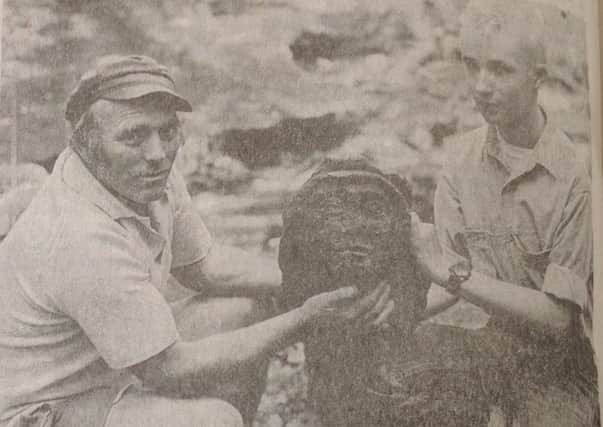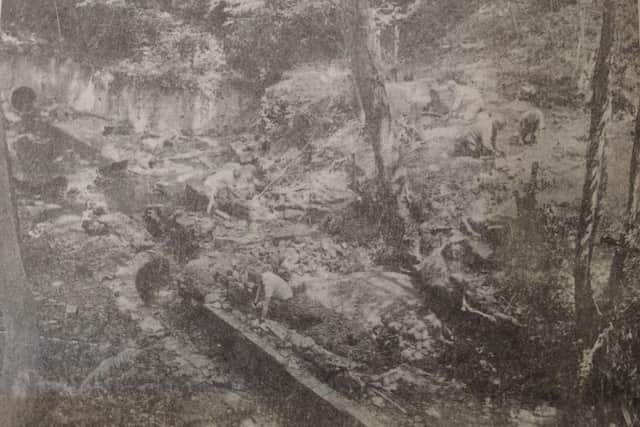NOSTALGIA: Fernhurst iron foundry unearthed
This article contains affiliate links. We may earn a small commission on items purchased through this article, but that does not affect our editorial judgement.


Historical remains tracing the local iron industry in the 16th century were unearthed by a team of archaeologists. Experts were uncovering and cleaning up the extensive remains of an iron foundry dating from around 1540.
The ironworks were at North Park, and were originally sited there to harness the water from Furnace Pond to drive the bellows to keep the furnace alight, and to utilise the natural supplies of charcoal and iron ore.
Advertisement
Hide AdAdvertisement
Hide AdMr John Wildman, field archaeologist with the Chichester Archaeology Unit, said most of the sites of the Wealden iron-works were well-known but this one was in a particularly find state of preservation. Work was needed on the site however, as it was suffering from storm damage and it had also been lying submerged when the dam burst during the war years.


Mr Wildman said: “What we’re doing is to survey, map and record what’s still left. There’s a massive amount of stonework and some timber too which is possibly part of an even earlier structure.”
There is a lot of loose stonework on the surface which the archaeologists were clearing to reveal the extent of the site.
The foundry, which was in woodland owned by Robin and Carla Hollist Barnes, was thought to have been built on the site of an old village settlement where perhaps as many as 400 people lived. The foundry produced items such as firebacks and cast-iron grave slabds, and in the latter part of its working life, a gun pit was dug to cast cannon for the Navy. The furnace itself would have been about 15 feet high and was stoked up with charcoal and iron ore by the women and children while the men worked to forge the metal.
Advertisement
Hide AdAdvertisement
Hide AdThe ironworks was originally constructed of sandstone from the remains of nearby Shulbrede Priory, taken when churches all over the country were being sacked during the English Reformation in the reign of Henry VIII. The Crown sold off a lot of the former church lands and it was the new owner’s right to use the land for any purpose he wanted. A stone gargoyle in the form of an ecclesiastical figure - thought to be some sort of apprentice nun - was found by the Hollist Barnes’s 16 year old son, Pat.


Eventually the production of iron ground to a halt with the coming of the Industrial Revolution when coke was used instead of charcoal and ironworks were being constructed on a much vaster scale.
It is believed the last time the foundry was used was in 1797.
Don’t miss out on all the latest breaking news where you live.
Advertisement
Hide AdAdvertisement
Hide AdHere are four ways you can be sure you’ll be amongst the first to know what’s going on.
1) Make our website your homepage at www.chichester.co.uk/
2) Like our Facebook page at www.facebook.com/ChichesterObserver
3) Follow us on Twitter @Chiobserver
4) Register with us by clicking on ‘sign in’ (top right corner). You can then receive our daily newsletter AND add your point of view to stories that you read here.
And do share with your family and friends - so they don’t miss out!
The Chichester Observer - always the first with your local news.
Be part of it.